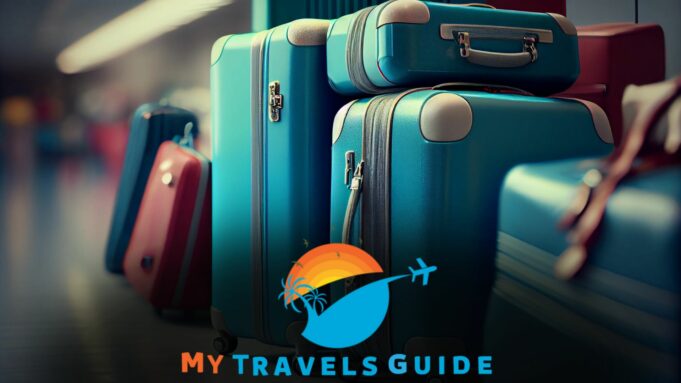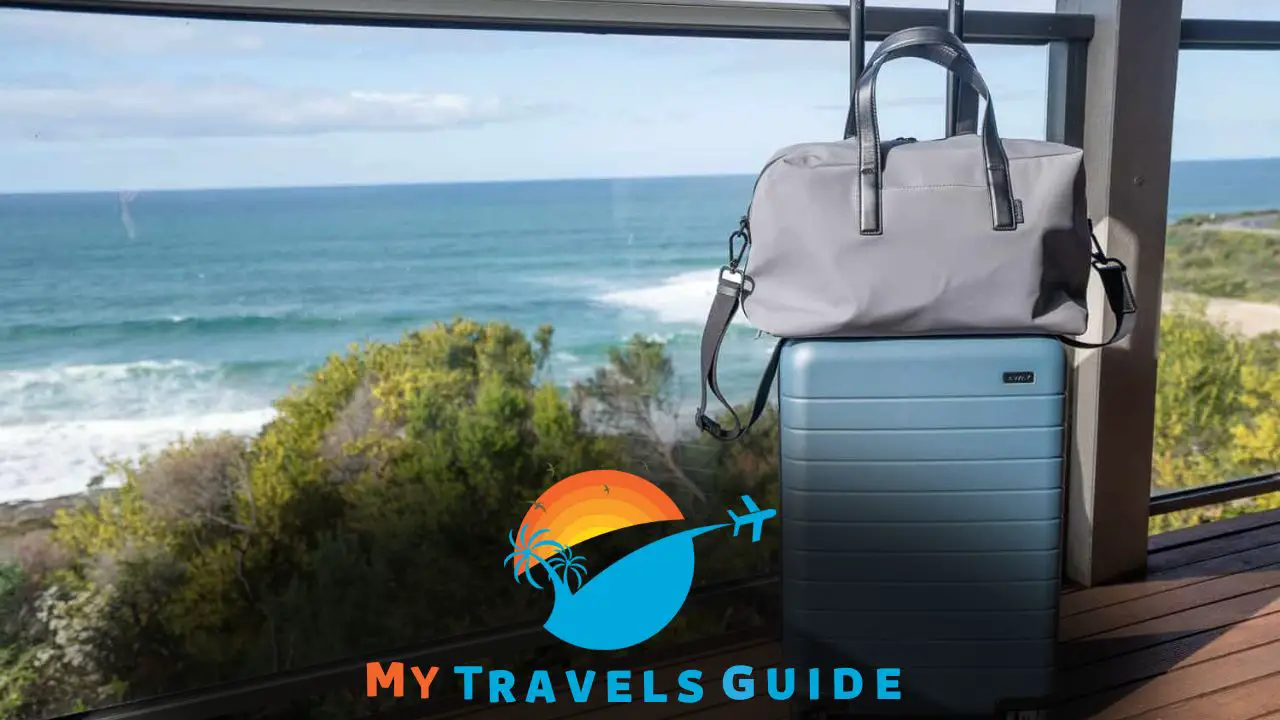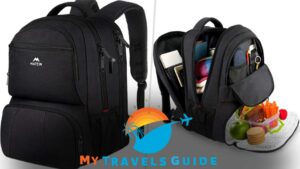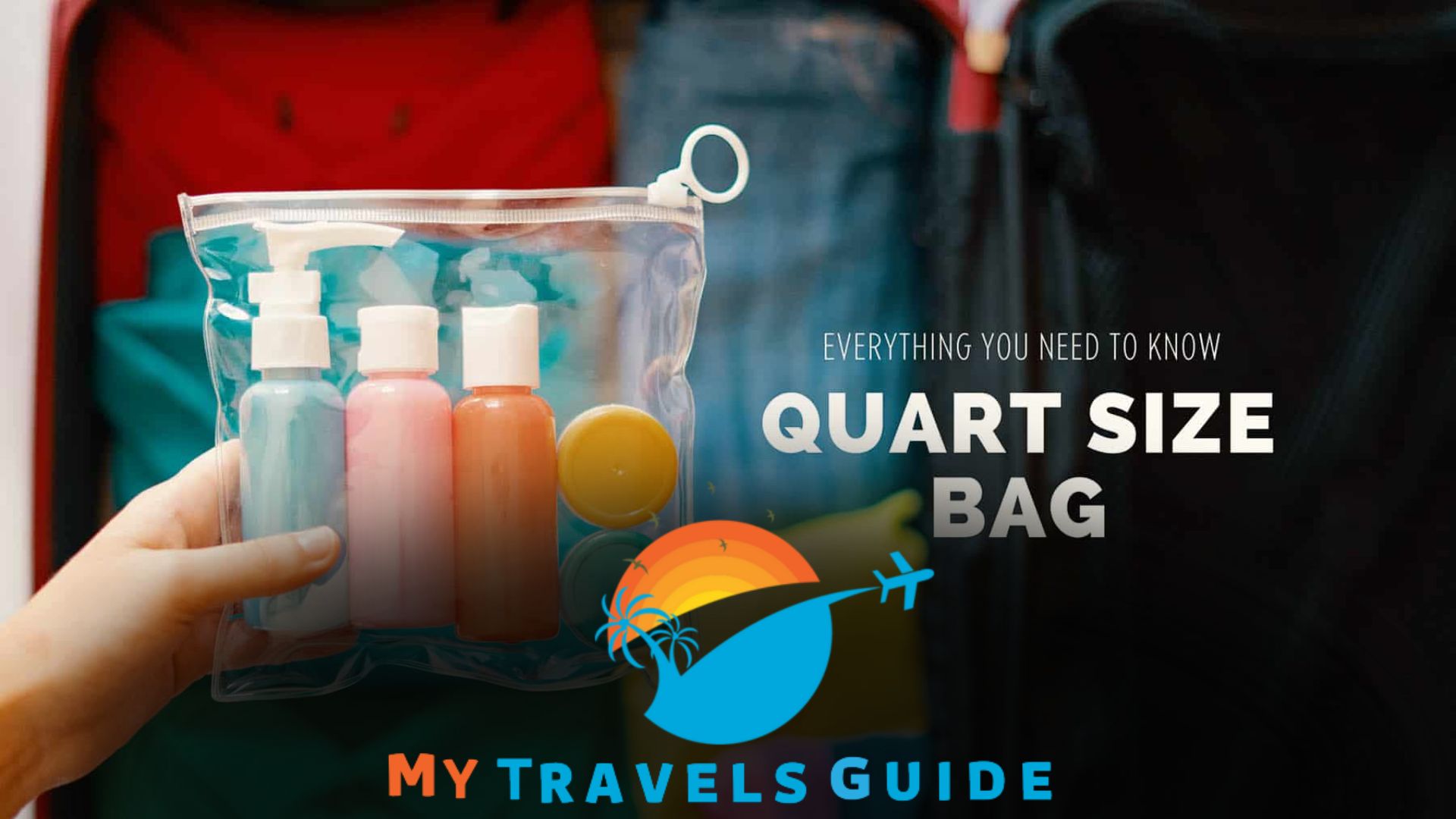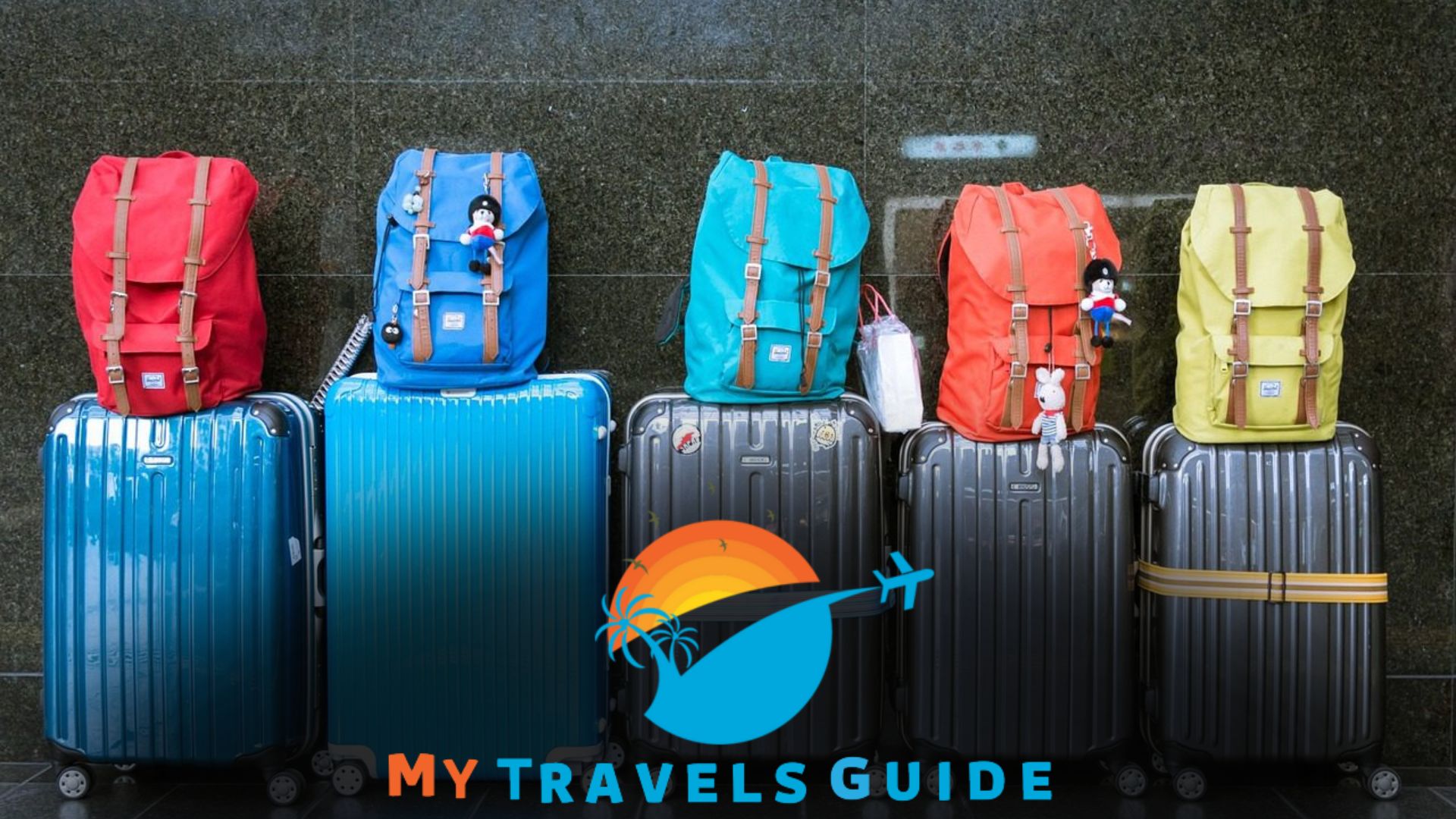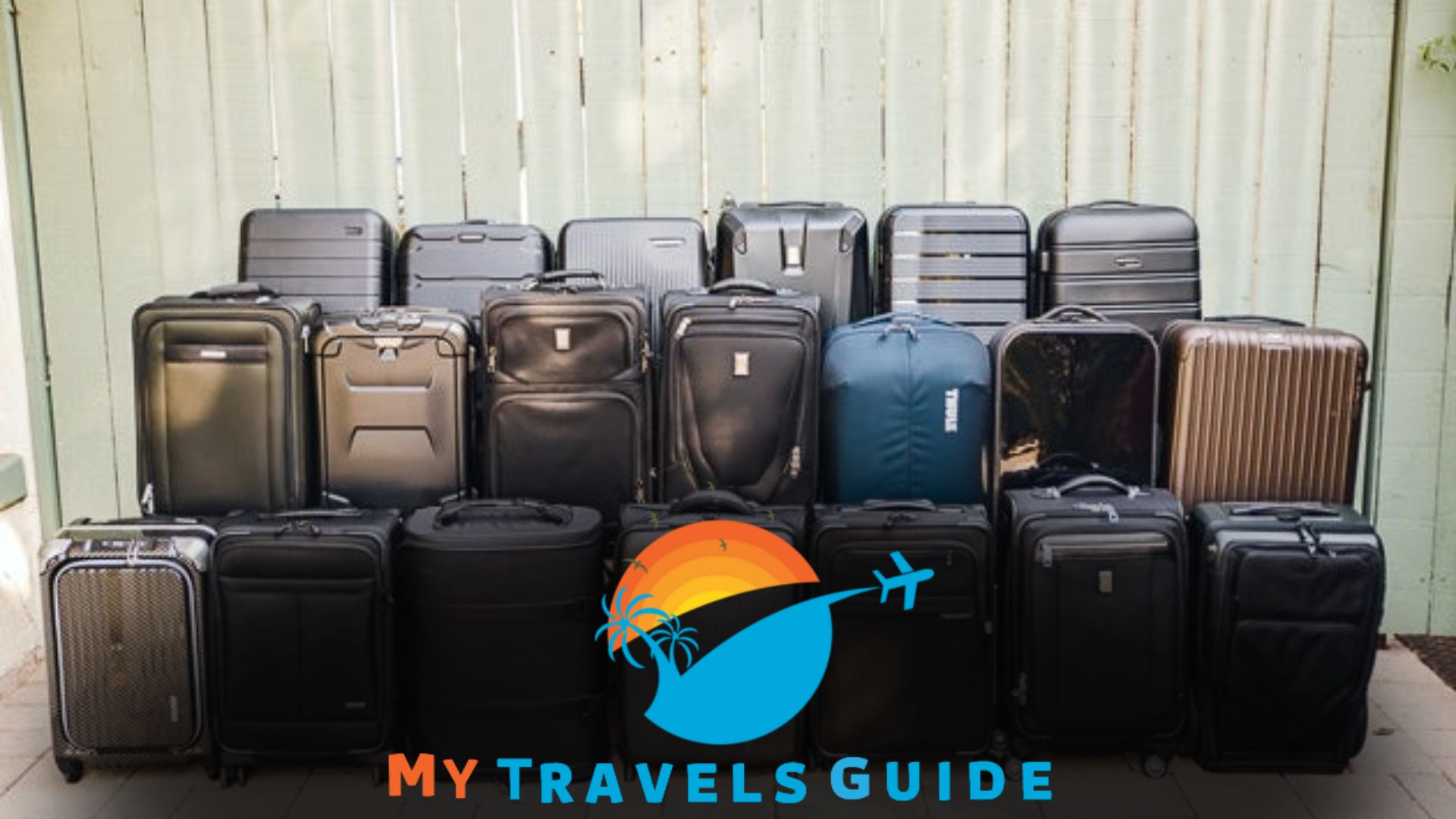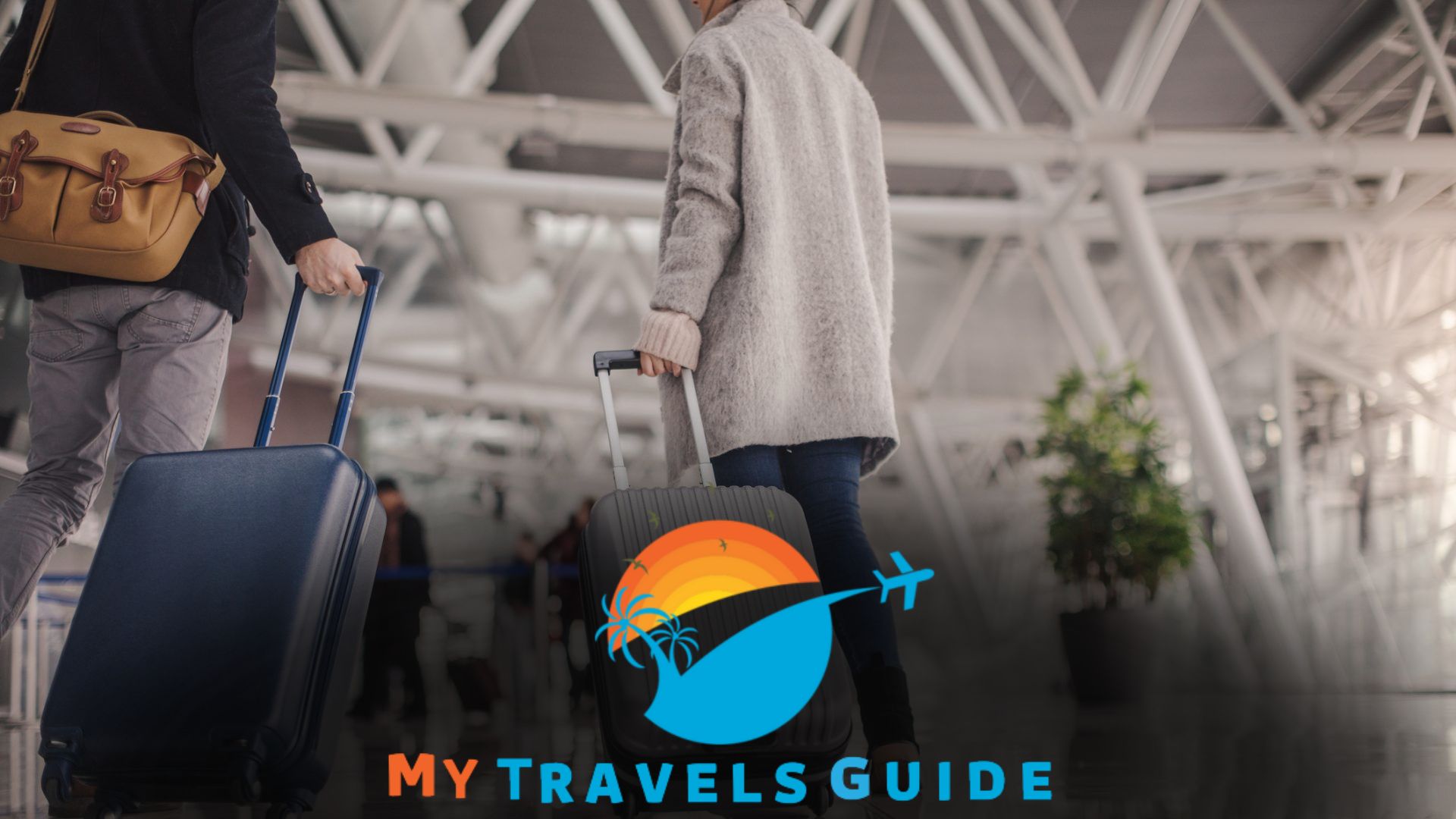In this article:
Airlines have specific size restrictions for checked baggage, typically ranging from 62 to 75 linear inches. Planning your trip includes knowing the dimensions of your checked baggage.
Airlines have specific size restrictions for checked luggage. These restrictions vary, but the average range is typically 62 to 75 linear inches.
It is important to be aware of these limits as exceeding them may result in additional fees or the need to check your bag as oversized or even cargo.
We will explore the standard checked baggage size regulations for various airlines, providing you with the essential information for a smooth, hassle-free journey.
Navigating Airlines Checked Baggage Guidelines
Understanding Airlines’ Baggage Policies
Before heading to the airport, it’s crucial to familiarize yourself with the baggage policies of your chosen airline. Airlines often have specific guidelines regarding the size and weight of checked baggage.
By understanding these policies in advance, you can avoid surprises or additional costs at the check-in counter.
The Importance of Knowing Size and Weight Limits
Knowing your checked baggage’s size and weight limits is essential for a smooth and hassle-free travel experience. Every airline has different regulations in place, so it’s crucial to pay attention to the specific requirements of your chosen airline.
Adhering to the size and weight restrictions can prevent delays at security checkpoints and minimize the risk of your luggage being deemed unacceptable for carriage.
Awareness of these limits also helps you pack efficiently, ensuring you bring everything you need while staying within the airline’s guidelines.
Speaking of checked luggage, learn more about what items you can and cannot pack by exploring our guide on “Can You Pack Sunscreen in Checked Luggage?”
Consequences of Exceeding Airline Baggage Dimensions
Exceeding the permitted dimensions set by the airline can result in unwanted consequences. Airlines may charge excess baggage fees, which can be significantly higher than the cost of purchasing additional baggage allowance in advance.
Moreover, if your baggage exceeds the size limits, you may be required to check it in as oversized baggage. This delays the check-in process and increases the risk of damaging your luggage during handling.
To avoid these issues, it’s crucial to familiarize yourself with the airline’s specific size and weight restrictions and ensure that your baggage adheres to these guidelines.
Remember, each airline has its baggage policies, so what is acceptable on one airline may not be on another. Take the time to research and understand these guidelines before you pack to make your journey hassle-free and stress-free.
Airlines Checked Baggage Size and Travel Ease
Air travel, stress-free check-in, and efficient travel processes are top of every traveler’s wish list. A crucial aspect of achieving these goals is ensuring that your checked baggage adheres to the correct size restrictions set by airlines.
In this article, we will explore the correlation between correct luggage size and stress-free check-in and how ideal baggage dimensions streamline the travel process.
The Correlation Between Correct Luggage Size and Stress-free Check-in
Opting for the correct luggage size plays a significant role in ensuring a stress-free check-in experience. Airlines have strict regulations in place regarding the dimensions of checked baggage, primarily to maintain safety, efficiency, and to maximize space in the aircraft’s hold.
Adhering to these guidelines can avoid potential issues such as excess baggage fees, check-in delays, or even luggage rejection.
When your luggage meets the specified size requirements, check-in becomes smoother and hassle-free.
Rather than facing the inconvenience of repacking your belongings or leaving items behind, you can enjoy a seamless check-in experience and focus on the excitement of your journey ahead.
How Ideal Baggage Dimensions Streamline the Travel Process
Having the ideal baggage dimensions ensures compliance with airline regulations and streamlines the entire travel process. By optimizing the size of your checked baggage, you can benefit from:
- Efficient utilization of available space: Airlines allocate a specific cargo hold space for each passenger’s checked baggage. Adhering to the recommended size limits allows the airline to maximize this space, resulting in better storage efficiency and faster loading and unloading times.
- Easy maneuverability: A well-sized checked bag is easier to handle, both for you and airport staff. It can be efficiently transported through baggage handling systems, reducing the risk of damage and ensuring your luggage arrives at your destination intact.
- Streamlined security checks: Security checks become more efficient when your baggage fits within the designated dimensions. An oversized or irregularly shaped luggage may require additional screening, causing delays and increased scrutiny. By abiding by size guidelines, you can streamline the security screening process and expedite your journey through the airport.
It’s important to note that specific airlines may have unique size restrictions and weight limits for checked baggage. To ensure a seamless travel experience, always refer to the guidelines provided by your airline.
By choosing suitably sized checked baggage, you can enjoy a stress-free check-in process and streamline your travel from start to finish.
For more insights on efficient packing, explore our comprehensive guide, ‘How to Pack Drinks in Luggage: Expert Tips for Travelers,’ and make your journey smoother.
Choosing the Right Luggage for Air Travel
Choosing the right luggage for air travel requires considering the size restrictions set by airlines for checked baggage. Finding a suitcase that meets the airline’s guidelines is crucial to avoid any hassles during your journey.
When planning your next trip, one of the first things to consider is choosing the right luggage for air travel. It’s essential to have a bag that meets the requirements set by airlines and suits your specific needs.
In this section, we will explore the factors to consider when purchasing luggage and which option, hardshell or softshell, is best for airline compliance.
Factors to Consider When Purchasing Luggage
Before making a decision, it’s important to consider several key factors that will help you choose the perfect luggage for your air travel:
- Durability: Look for a bag made from high-quality materials that can withstand the rigors of travel. Your luggage must withstand time, whether constant lifting, shifting, or being thrown onto baggage carousels.
- Size and Weight: Airlines have specific requirements for the size and weight of checked baggage. Check the airline’s guidelines before purchasing to ensure your luggage is compliant. Remember that smaller bags are easier to maneuver and fit into overhead compartments.
- Compartments and Accessibility: Consider how many compartments or pockets your luggage has. Different sections can help you stay organized and easily access your belongings during the journey.
- Wheels and Handles: Look for luggage with sturdy wheels and comfortable handles. Carrying around might become a hassle if your bag doesn’t have wheels, especially in busy airports.
- Security Features: Consider bags offering features like TSA-approved locks or built-in combination locks to protect your belongings during travel.
- Style and Design: While functionality is crucial, don’t forget about style! Choose a bag that reflects your personality and preferences. After all, your luggage is a reflection of your travel style.
Hardshell vs. Softshell: Which is Best for Airline Compliance?
When deciding between hardshell and softshell luggage, it’s important to consider both the pros and cons:
| Hardshell Luggage | Softshell Luggage |
|---|---|
| • Provides excellent protection for fragile items • Resists water, dirt, and stains • Easy to clean • Less likely to get scratches or dents | • More flexible, allowing you to squeeze it into tight spaces • Additional exterior pockets for quick access to frequently used items • Generally lighter in weight than hardshell luggage |
Remember that airlines may have specific requirements for both hardshell and softshell luggage, including restrictions on size, weight, and materials.
Always check with your airline regarding their regulations to avoid any surprises at the airport.
In conclusion, choosing the right luggage for air travel is crucial for a stress-free journey. You can find the perfect bag that suits your needs by considering durability, size, compartments, wheels, and handles.
Additionally, deciding between hardshell and softshell luggage depends on your preferences and the specific requirements of the airlines you’re flying with.
Packing Tips for Meeting Airline Size Requirements
These helpful packing tips ensure your checked baggage meets the airlines’ size requirements. Pack efficiently to avoid oversized or overweight luggage issues and have a stress-free travel experience.
Airlines have specific size restrictions when it comes to checked baggage, and it’s important to adhere to these guidelines to avoid additional fees or hassle at the airport.
We have gathered expert strategies and essential tools to help you pack efficiently within these size constraints.
Read on to discover how to ensure your luggage meets the required dimensions without sacrificing travel essentials.
Strategies for Efficient Packing Within Size Constraints
When it comes to packing your luggage to meet airlines’ checked baggage size requirements, following these efficient strategies can make a noticeable difference:
- Roll, don’t fold: Instead of folding your clothes, which can take up more space, roll them up tightly. Not only does this save space, but it also helps to minimize wrinkles.
- Maximize space with compression bags: Use compression bags to reduce the size of your clothes further. These bags allow you to remove excess air, making your garments more compact and leaving more room for other items.
- Choose versatile clothing items: Opt for pieces that can be mixed and matched to create multiple outfits. This way, you can pack fewer clothes while having various options during your trip.
- Utilize packing cubes or organizers: These handy accessories can help categorize your belongings and keep them neatly organized. By separating your items into different cubes or organizers, you can make the most of the available space in your luggage.
- Wear your bulkiest items: If you’re traveling with bulky items like a jacket or heavy boots, consider wearing them instead of packing them. This frees up space in your suitcase and makes it easier to meet the size requirements.
Tools and Gadgets to Measure and Maintain Baggage Size, Ensuring
Ensuring your baggage is within the required dimensions is crucial to avoid any inconvenience at the airport. These tools and gadgets can help you measure and maintain the size of your checked luggage:
| Tool/Gadget | Description |
|---|---|
| Luggage Scale | Storage bags are transparent, resealable bags that can be used for liquids and toiletries. They should comply with the Transportation Security Administration (TSA) guidelines to make the security check process smoother and hassle-free. |
| Measuring Tape | A small measuring tape can be beneficial, especially if your luggage doesn’t have built-in dimensions indicators. This tool allows you to quickly measure your bag’s length, width, and depth. |
| Expandable Suitcase | An expandable suitcase provides flexibility when it comes to meeting size restrictions. It allows you to adjust the size of your luggage based on the airline’s requirements, ensuring you stay within the allowed dimensions. |
| Storage Bags | Storage bags are transparent, resealable bags that can be used for liquids and toiletries. They should be compliant with the Transportation Security Administration (TSA) guidelines to make the security check process smoother and hassle-free. |
By incorporating these strategies and utilizing the right tools, you can pack efficiently and confidently, knowing your checked baggage will meet the airlines’ size requirements.
Make the most of the available space in your suitcase and enjoy a stress-free travel experience.
For specifics on Allegiant Air’s policies and other helpful travel tips, check out our detailed article on ‘How Strict is Allegiant Air With Carry-On Size.
Airline-specific Baggage Size Regulations
When it comes to air travel, knowing the specific regulations about checked baggage size can save you time, money, and stress.
Different airlines have their own set of rules regarding the size and weight of checked bags, and it’s important to be aware of these regulations before heading to the airport.
In this section, we will delve into airline-specific baggage size regulations, focusing on the variations among major airlines and how to find and interpret these rules.
Variations in Size Allowances Among Major Airlines
It’s no secret that major airlines have different policies when it comes to checked baggage size.
Understanding these variations can help you plan your trip more efficiently and avoid any unexpected luggage issues at the airport.
Here is a table of notable differences in size allowances among major airlines:
| Airline | Carry-on size (inches) | Checked bag size (inches) | Checked bag weight limit (pounds) | Additional fees |
|---|---|---|---|---|
| American Airlines | 22 x 14 x 9 | 50 x 27 x 70 | 50 | $30 for the first checked bag, $40 for the second checked bag, $150 for the third checked bag |
| Delta Air Lines | 22 x 14 x 9 | 62 x 80 x 22 | 50 | $30 for the first checked bag, $40 for the second checked bag, $150 for the third checked bag |
| United Airlines | 22 x 14 x 9 | 62 x 80 x 22 | 50 | $30 for the first checked bag, $40 for the second checked bag, $150 for the third checked bag |
| Southwest Airlines | 20 x 16 x 8 | 62 x 80 x 42 | 50 | No checked bag fees for the first two checked bags |
| Spirit Airlines | 22 x 16 x 8 | 62 x 80 x 42 | 40 | $39 for the first checked bag, $55 for the second checked bag, $75 for the third checked bag |
| JetBlue Airways | 22 x 14 x 9 | 62 x 80 x 22 | 50 | $35 for the first checked bag, $45 for the second checked bag, $150 for the third checked bag |
| Alaska Airlines | 22 x 14 x 9 | 62 x 80 x 22 | 50 | $25 for the first checked bag, $35 for the second checked bag, $100 for the third checked bag |
| Hawaiian Airlines | 22 x 14 x 9 | 62 x 80 x 22 | 50 | $30 for the first checked bag, $40 for the second checked bag, $150 for the third checked bag |
As you can see, the size limits for carry-on and checked bags can vary depending on the airline. While one airline may allow larger carry-on bags, they may have stricter requirements for checked bags.
It’s essential to check the specific rules of your chosen airline to ensure your bags comply with their regulations.
How to Find and Interpret Baggage Size Rules Per Airline
Finding and interpreting baggage size rules per airline is crucial to ensure a smooth travel experience. Here are some steps to help you navigate through the different regulations:
- Visit the airline’s official website.
- Look for a section specifically dedicated to baggage information or policies.
- Find the details regarding both carry-on and checked baggage size limits.
- Pay attention to any additional charges that may apply if your bags exceed the allowed dimensions.
- Double-check the regulations shortly before your trip, as airlines may update their rules from time to time.
Interpreting the baggage size rules per airline can be straightforward once you have found the information.
Remember the measurements mentioned (length, width, and height), and ensure that your bags fall within the given allowances. If you have any doubts or concerns, it’s advisable to contact the airline’s customer service for clarification.
By familiarizing yourself with the airline-specific baggage size regulations and following the steps to find and interpret these rules, you can avoid any surprises or inconveniences when it comes to your checked bags.
Remember, being prepared and well-informed is key to a stress-free travel experience.
Navigating International vs. Domestic Sizes
Understanding the difference in baggage policies between international and domestic flights is crucial when it comes to checked baggage.
Airlines worldwide have their own regulations, making it important to adapt to varying dimensions on multi-leg trips. This guide will help you navigate the differences in baggage sizes, ensuring a smooth travel experience.
Adapting to Varying Dimensions on Multi-leg Trips
Adapting to the varying baggage dimensions when embarking on a multi-leg trip involving domestic and international flights is crucial.
This means ensuring that your checked baggage complies with the strictest regulations of any airline you will be flying with. Here are some tips to help you navigate multi-leg trips:
- Research the baggage policies of each airline involved in your journey. Check for any variations in maximum weight and size limits.
- Pack your belongings accordingly to adhere to the strictest dimensions. This will help avoid any extra fees or complications during your trip.
- Consider packing a smaller, lightweight bag within your main checked baggage. This way, if you need to comply with a stricter size limit on a certain leg of your journey, you can easily transfer items to the smaller bag.
- Plan your layovers and connections with ample time between flights to ensure you have enough time to comply with any baggage transfer requirements.
Understanding the differences in baggage policies globally and adapting to varying dimensions on multi-leg trips can ensure a hassle-free travel experience.
Always double-check the specific regulations of each airline you will be flying with to avoid any surprises at the airport.
Preparing for Baggage Check: A Handy Checklist
Before embarking on your long-awaited trip, it is crucial to ensure that your checked baggage complies with the size restrictions set by the airlines.
This will save you from any last-minute headaches and potential extra fees at the airport. To help you prepare efficiently, we’ve compiled a handy checklist to verify your luggage size before heading to the airport.
Last-minute adjustments for a hassle-free baggage check experience
No one likes the stress of frantically shuffling items at the airport to meet the baggage size requirements. You can ensure a seamless and hassle-free baggage check experience by taking a few moments to make last-minute adjustments.
To assist you further, we’ve compiled a checklist to help you breeze through the process effortlessly.
Verify Luggage Size Before Heading to the Airport
To avoid any surprises and potential delays at the airport, verifying your luggage size in advance is imperative. Different airlines have varying size restrictions for checked baggage, so it is crucial to review the specific guidelines for your chosen airline.
Below is a checklist to help you make sure your luggage meets the requirements:
- Measure the dimensions of your suitcase, including length, width, and height, using a reliable measuring tape.
- Check the maximum size limits imposed by your airline for checked baggage. These can usually be found on the airline’s official website or by contacting their customer service.
- Consider weight restrictions as well. Ensure that your luggage complies with the airline’s size and weight restrictions.
- Take into account any additional fees or charges for oversized or overweight bags. Familiarize yourself with the relevant policies beforehand to avoid any surprises.
Last-minute Adjustments for a Hassle-free Baggage Check Experience
With your luggage size verified, you are well-prepared for a trouble-free baggage check experience. However, it’s always wise to double-check a few final details before heading to the airport. Here’s a handy checklist for those last-minute adjustments:
- Remove any unnecessary items or duplicates from your suitcase. This will help reduce weight and free up valuable space.
- Ensure that your liquids and gels comply with the airport’s security restrictions. Place them in a clear, resealable bag if needed.
- Pack any fragile or valuable items securely to prevent damage during handling.
- Attach a sturdy luggage tag with your contact information to easily identify your bag and minimize the chances of getting lost.
- Finally, double-check your luggage’s zippers, locks, and straps to ensure they are in good working condition.
By following this checklist and verifying your luggage size, you can eliminate unnecessary stress and smoothly sail through the baggage check process.
Being well-prepared will allow you to focus on the excitement of your journey without any baggage-related worries. So, pack smart, adhere to the airlines’ restrictions, and enjoy your trip with peace of mind.
Optimizing Luggage Size for Frequent Flyers
Frequent flyers know the importance of optimizing luggage size to make their travels more convenient and hassle-free. Airlines have strict regulations when it comes to checked baggage size, so it’s essential to familiarize yourself with these requirements to avoid any additional fees or delays at the airport.
In this section, we will explore the benefits of standardizing your luggage and provide useful tips for regular travelers to ensure they remain within size limits.
Benefits of Standardizing Your Luggage
Standardizing your luggage has numerous advantages for frequent travelers. By adhering to consistent size and weight guidelines, you can:
- Maintain Efficiency: Standardized luggage allows easy packing and optimized organization, saving valuable travel time.
- Avoid Additional Fees: By ensuring your luggage meets the airline’s checked baggage requirements, you can avoid the inconvenience and extra costs associated with oversized or overweight bags.
- Protect Valuables: Properly sized luggage allows for more secure packing, reducing the risk of damage to your belongings during transit.
- Maximize Storage Space: By optimizing your luggage size, you can maximize the available storage space in overhead compartments or under-seat areas, ensuring a more comfortable journey.
Tips for Regular Travelers to Remain Within Size Limits
To ensure your luggage remains within size limits, follow these practical tips:
- Check Airline Regulations: Familiarize yourself with the specific checked baggage size limits enforced by the airlines you frequently travel with. These limits may vary between airlines, so staying current is crucial.
- Invest in a Reliable Luggage Scale: A portable luggage scale is essential for frequent travelers. It allows you to accurately measure the weight of your bags before heading to the airport, preventing any surprises at the check-in counter.
- Pack Efficiently: Use packing cubes or compression bags to optimize space in your luggage. Roll your clothes instead of folding them to save space and reduce wrinkles. Place heavier items at the bottom and lighter ones on top to maintain balance and reduce the risk of damage.
- Consider Expandable Luggage: If you often struggle to fit all your belongings within the limit, consider investing in expandable luggage. These bags can be adjusted to accommodate additional items while adhering to the airline’s size requirements.
By following these tips and maintaining awareness of airline regulations, you can ensure that your checked baggage size remains within the accepted limits, making your travels smoother and more enjoyable.
Conclusion
To ensure a hassle-free travel experience, it is essential to be aware of the checked baggage size restrictions imposed by airlines. By understanding these limitations, passengers can avoid additional fees and delays at the airport.
Remember to carefully measure and weigh your luggage before departure to ensure compliance.
Following these guidelines will make your journey smoother and more enjoyable. Plan and pack smartly to avoid any last-minute surprises.

